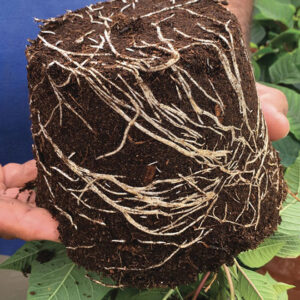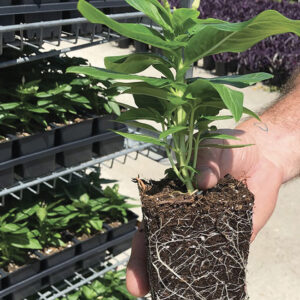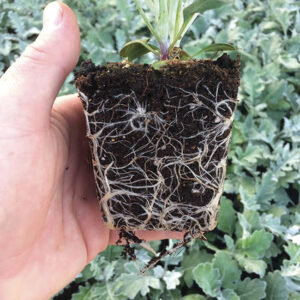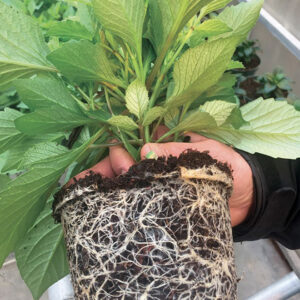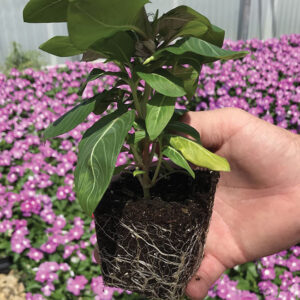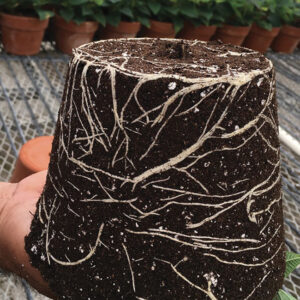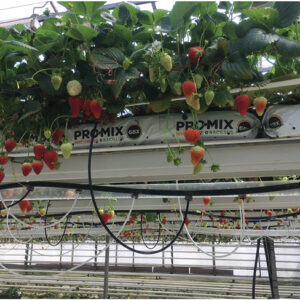
Features
Growing media trends
Peat moss and other supply challenges continue to impact industry
November 23, 2022 By Andrew Snook
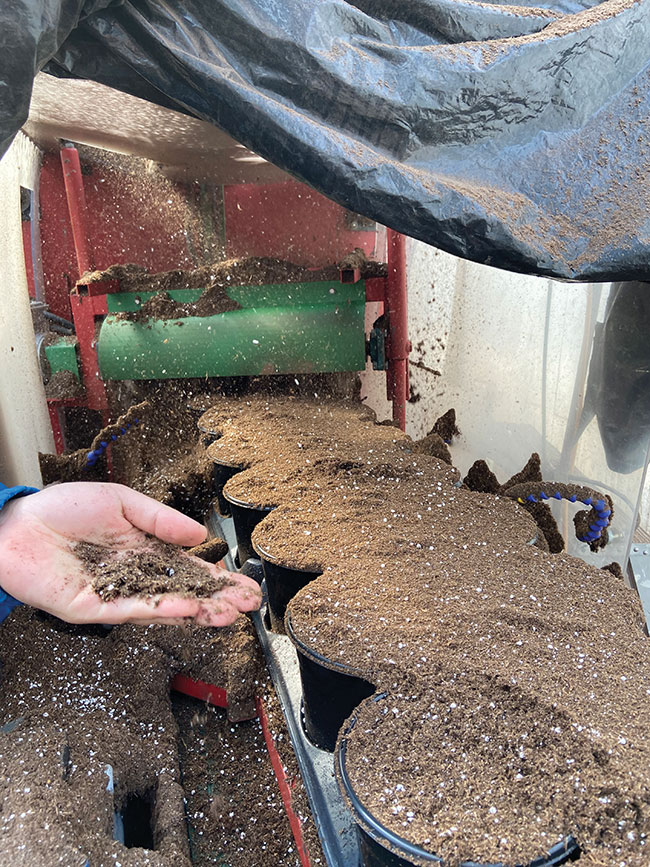 Shortages of peat moss fuelled a new trend of many customers placing their orders in advance.
Photo: Sun Gro Horticulture
Shortages of peat moss fuelled a new trend of many customers placing their orders in advance.
Photo: Sun Gro Horticulture It’s fair to say that the COVID-19 coronavirus pandemic has had an impact on almost every industry worldwide. The dust has settled, but the global supply chain for many markets is still struggling to get back to normal. Other markets, including the growing media industry, will probably never be the same.
“This industry was lucky enough to have a nice boom during the pandemic, contrary to a lot of other industries. People were staying at home wanting to do more gardening, and that definitely had a positive impact on the industry, but it has also put a lot of strain on the greenhouse industry itself, growing media included,” says Pierre-Marc de Champlain, director of technical services at Berger.
Some companies, including Berger, were forced to adapt their product offerings and change their operations to make sure they meet demand in a timely manner.
“We had to make adjustments to how we function, and this has put the spotlight on certain shortcomings of the growing media industry, especially on the supply chain side.” de Champlain says. “However, at Berger we see these challenges as opportunities to improve our operations.”
Peat moss
Sun Gro Horticulture’s Brandon Yep, grower specialist for Canada, says the peat moss shortages that took place through 2021 and 2022, primarily in Eastern Canada, impacted all of the growing media companies.
“We were hit pretty hard. It depends on where the bogs are located. All of the harvest was weather dependent. In certain pockets of New Brunswick and Quebec, the weather was worse, so there were less people out on the bog harvesting,” Yep says. “For us, we were completely sold out last year. I believe a couple other companies were in the same boat, so it did have a major impact.”
The recent shortages of peat moss fuelled a new trend of many customers placing their orders in advance.
“Customers and growers are definitely ordering earlier, much more in advance, much more in the summer months. Whereas in previous years, because there has been no shortage, they just kind of ordered whenever they needed it, later in the fall months,” Yep says. “We’re encouraging customers to put their orders in early just to ensure they get products.”
He adds that consumers are purchasing many other products far in advance as well, in an effort to avoid being impacted by another shortage.
“There are people that I know who have placed orders for plastics and other stuff for three years out. In the past, they were just kind of purchasing when they needed it,” Yep says.
He says navigating the peat moss shortage has been a learning experience for many companies.
“In the past, we were so flush with peat that we never really had the need to forecast out a couple of years. But now, we have to be extremely proactive, and track the quantity of orders we’re taking versus harvest to ensure that everybody gets product on time,” he says. “We’ve invested a lot into the company, whether it’s tracking strategies or staff to ensure that those needs are met.”
Berger manufacturers many of its own ingredients, including the peat moss it harvests, so the company has some control over its supply chain, but it’s far from absolute.
“It’s not perfect control because it is dependent on the weather,” de Champlain says. “Our harvesting operations are spread throughout Canada, which helps mitigate the risk of not meeting our ambitious harvest targets, but there are never any guarantees when you’re at the mercy of Mother Nature.”
The past two years have been less favourable for peat harvesting in many areas. Combined with the higher demand for horticultural products during the pandemic, the availability of peat moss has been a significant challenge.
“At Berger, we have always maintained a healthy reserve of peat moss to counteract poor harvest years and fulfill the needs of our customers,” de Champlain says, adding that they rely on the subsequent harvests to refill their stockpile, which was problematic this year. “Our resource management is the best in the industry. Our thorough planning has allowed us to mitigate the negative effects of the weather and meet the high demand for value-added growing media, but it has limited our ability to offer straight peat moss to customers.”
Yep says it’s very difficult to determine final harvest numbers in advance because the weather makes it a moving target.
“We want to harvest a certain amount, but as we move through a season, depending on how much rain we’re getting, depending on how we need to get on the bog, we have to kind of adjust what we predict our inventory will be, so we’re constantly predicting future harvest, which is challenging to do,” he says. “It’s definitely a moving target. But with the tracking strategies we have, we’re getting better at it.”
This has forced consumers to change their habits. Growers that were making their own mix, whether to have the ability to customize the characteristics of their growing media or simply as a cost-savings strategy, were heavily dependent on the availability of peat moss.
“The current situation puts those customers in a difficult position where they can’t really rely on the peat supply to fulfill their needs. They must now buy ready-to-use growing media. Although Berger offers a wide variety of mix options to meet the diverse needs of our customers, and we recommend using our products ‘as is,’ growers still have the option to further customize the growing media to cater to the particular requirements of certain crops,” de Champlain says.
Due to the shortages experienced in the U.S., bark has risen slightly as a peat replacement, while wood fibre as a partial replacement has increased substantially. In Canada, the growing media industry is predominantly still peat moss driven, so it was not affected at the same level, Yep notes.
“But I do see customers being more open to trying new raw materials. I feel the customers want to get comfortable with different raw materials in case there is an issue with supply, so if they need to switch to another product, they have familiarity with it,” he says.
Yep says that the growing media industry as a whole is looking more aggressively at new materials.
“I think there’s definitely a push towards looking at new raw materials that are not so sensitive to the weather – not as a replacement, but as a partial replacement. There’s a lot of R&D going on regarding the material,” he says.
Rémi Naasz, scientific expert director for substrates and materials for Premier Tech, says growing media companies must always have contingency plans for managing supply issues.
“We try to always work with a plan A, and a plan B that’s added as a contingency. That’s really important in the growing media industry,” he says. “We were able to supply and provide all our distributors and growers with a high volume of growing media because we have long-term relationships and collaboration with suppliers.”
Naasz adds that it’s important to have alternatives products as well, whether that’s for peat moss, wetting agents or fertilizer.
“That’s another way to secure our supply,” he says.
Lambert Peat Moss argonomist Frederic Gagnon says his company focused on creating alternative mixes during the peat moss shortages over the past two years, like LM-10.
“LM-10 is a 100-per-cent peat moss mix with pH adjusted, fertilizer starter charge and wetting agent. It can be used as is, because it is made from a high-quality peat moss with few fine particles in it. You will end up with a great combination of porosity and water retention, two key elements for healthy plants,” he says. “You can also use this aggregate-free media as a peat base that will be completed at your facility with the additive you wish to incorporate and at the percentage you want. The core of your final mix had been submitted through a strict quality control process at ours laboratory. The main benefit is the quality of the peat base mix. Plus, you have an economic alternative on top of it.”
Since early 2021, Gagnon says that everyone has been planning in advance. To help ensure Lambert Peat Moss has a large enough inventory of mixes to supply their customers, the company has increased its production lines and capacity.
“In 2021, everybody began to plan in advance more than before because it’s going be hard to deliver just-in-time now because of the problems with the ports and the containers,” he says.
Ingredient issues
Peat moss isn’t the only ingredient that’s been affected by global supply chain issues. The availability of perlite and vermiculite has also been impacted.
“While perlite hasn’t really been affected that much, because the supply is pretty good, vermiculite has been a bit more of a challenge. Both of those components are important for growing media. Perlite provides a lot of air space, which is something that growers want within the growing media to drain excess water and have better control over their fertigation practices,” de Champlain explains. “Vermiculite, especially for germinating, is a very important component. It helps keep the growing media moist around the seed, helps with germination, and helps retain nutrients to make those available to the young plants as they’re growing.”
For most growing media manufacturers in North America, the ores used to produce these components are sourced overseas. Supply chain disruptions have had a significant impact, forcing companies to think outside the box and be inventive. For example, to help counter these issues, Berger has been using more locally available ingredients such as wood fibre. In fact, with the success of the BM4 NF Wood products, Berger has expanded their NF Wood offer over the past few years with the launch of the BM5 (combination of perlite and NF Wood ) and the BM2 NF Wood product lines. This makes them much less dependent on the overseas supply chain.
“The issues we’ve had during the pandemic have really forced us to be even more proactive on that front and look for other innovative growing media components that might be made from residual waste from another industry, or other components that could be interesting for the growing media industry. Our R&D efforts are focused on a lot of that,” de Champlain says.
Recent supply chain challenges have made many growing media companies reevaluate how they get certain inputs supplied, and not just because of the pandemic.
“Even ingredients for which we have never had issues are now closely monitored. We need backup suppliers for everything, because in the current context you just never know,” de Champlain says. “It’s all about mitigating risks for our customers. If a crucial ingredient is missing, or if a critical equipment needs to be replaced, we must be ready for it. We have growers depending on on-time delivery of our products, and if we can’t fulfill that promise, it puts them in an extremely difficult position. We know they have plant material waiting to be transplanted and a tight schedule to respect.”
“Two winters ago, there were issues with the Texas [electrical] grid shutting down for several weeks. It wasn’t really on our radar that all of our wetting agent is dependent of an industry located in that area,” de Champlain says. “So when the power went down for several weeks, we really had to scramble, but thanks to our pro-active approach, we were able to react quickly and implement an effective solution.”
Berger now spends significant time in its R&D department, not only looking at the next innovations for the growing media industry, but also focusing on alternative sources for all its mix ingredients. The ultimate goal is to have backup suppliers and equipment for everything, in case there are unforeseen issues on the horizon.
Gagnon says his company looked at alternatives to various ingredients during the shortages to help control costs.
“The price of every component rose a lot. We had to adjust and supply some alternatives to reduce the costs,” he says.
One of the ways Lambert Peat Moss was able to control its costs was through the production of its ECOPEAT line, which features highly fibrous natural wood fibre collected from the company’s peat bogs and processed at its facilities.
“It can be a replacement of the perlite itself, which helped to reduce the costs,” he says, adding that the performance of the mix is a good alternative when perlite is unavailable. “It’s an alternative to produce and offer to the customers.”
Growing markets
Premier Tech’s Naasz says one of the future growth markets for growing media is the berry production sector.
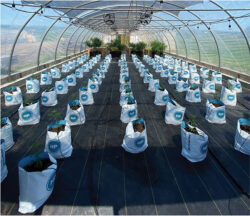
Premier Tech’s Rémi Naasz says growing media companies must always have contingency plans for managing supply issues.
Photos: Premier Tech
“That trend already started years ago where the berry market is going from soil to soilless, from ground to above ground production. That will have a huge impact on producing more growing media for that kind of market. Strawberries, blueberries and raspberries are the three main berries increasing in production in soils,” he says. “I’m seeing that more and more in Canada, the U.S. and Mexico.”
Despite the recent struggles within the cannabis sector, Naasz believes growing media demand will continue to increase in this market.
“It is still an important market demanding a lot of growing media, and it will continue to increase. Canada and North America are leading the way in terms of technology in terms of growing media used for that market,” he says.
There are additional opportunities for growing media companies in the mature vegetables markets, like tomato, cucumber and pepper production, in terms of supplying more sustainable products.
“Growers don’t want to decrease their quality, but they want to take into account the sustainable aspects of their growing media,” Naasz says. “They are more or more regulated and need to send growing media at the end of life to a landfill and sometimes they have to pay. Looking at new sustainable materials that will not decrease the quality is something growers in that kind of industry want right now.”
Print this page
